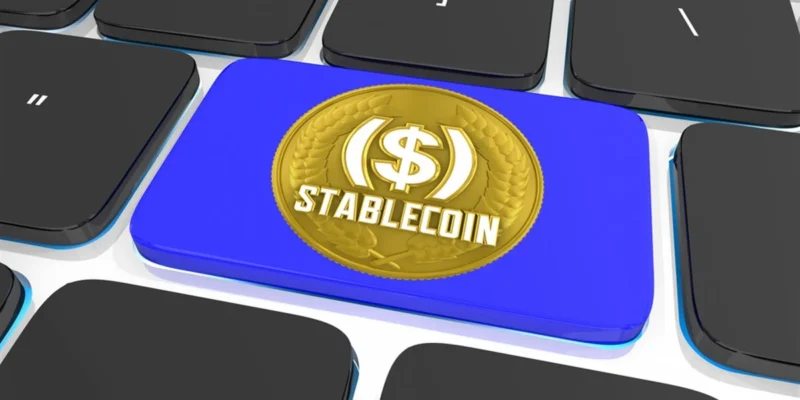If crypto has a quiet power player, it’s stablecoins. They don’t dominate headlines like Bitcoin and Ethereum, but they sure are doing something even more valuable, building infrastructure and stability.
These aren’t just digital dollars anymore. They’re being used for remittances, payments, settlements, and more than ever they are catching the eye of both retail and institutional investors. With companies like Amazon and Walmart making moves, it’s clear this isn’t a sideshow. Stablecoins are becoming core to how digital finance runs.
So, if you’re watching where value might emerge next, here are the key names, coins and companies to know as well as a few unexpected players:
Tether (USDT): Tether isn’t new, but it’s still the most-used stablecoin on the planet. It processes more volume daily than Bitcoin and Ethereum combined. And while it’s faced questions over transparency, the numbers don’t lie. When crypto moves, a lot of it moves through USDT. The more that happens, the more exchanges like Binance and Coinbase benefit from liquidity and trading activity. Even without a stock ticker, Tether remains the current behind the crypto economy.
USD Coin (USDC) & Circle (CRCL): USDC might not have Tether’s size, but it arguably has its respect. Circle, the company behind it, built its whole brand on transparency, full reserve backing, regular audits and regulatory cooperation. Now that it’s a publicly traded company, Circle gives investors a direct route into the stablecoin economy. CRCL stock spiked after its June IPO, and it’s not just hype, it’s infrastructure. Circle is at the center of the most regulation-aligned corner of the stablecoin market.
Dai (DAI): DAI doesn’t have a CEO or a company, it’s governed by code and a DAO. What backs it? Crypto. How’s it managed? Smart contracts and despite its complexity, it’s proven itself remarkably stable. DAI’s independence makes it a core part of DeFi platforms lending, saving, and collateralizing. No equity exposure here, but if you’re watching Ethereum-based protocols or DeFi token performance, DAI is a strong indicator of the health of that ecosystem.
USD1 (World Liberty Financial): Launched by Trump’s World Liberty Financial and picked up by MGX in a high-profile $2B deal on Binance, USD1 has made noise fast. It’s still in its early days, and the market cap is relatively modest, but its connections to both politics and capital make it one to keep on the radar. Whether it will sustain the momentum is unclear, but it represents something we haven’t seen before; stablecoin-as-political-leverage.
Amazon (AMZN): If Amazon issues its own stablecoin and yes, that’s reportedly on the table, it could shift global payment rails overnight. Think about it, why pay 2–3% in card fees when you can use a digital dollar created in-house? For Amazon, this isn’t about crypto, it’s about cost efficiency and control. If they pull it off, owning AMZN today might mean you’re positioned for tomorrow’s payment revolution.
Walmart (WMT): Walmart doesn’t always get the same digital hype as Amazon, but don’t underestimate its blockchain ambition. The retailer has filed patents, built supply chain pilots on-chain, and is reportedly exploring stablecoins for payment cost reduction. It makes sense: margins are tight, and saving even 1% at the point of sale scales quickly. WMT stock might get a quiet bump if it becomes one of the first retail giants to roll out crypto-native payment systems.
Circle (CRCL): Again and Deservedly so,
Circle shows up twice because it checks both boxes; product and equity. It runs USDC, partners with Coinbase, and has strong visibility with regulators. That’s rare and as more stablecoin usage moves above-board in remittances, payrolls and B2B payments, Circle is positioned to be the fintech bridge between crypto and the financial system we already use. CRCL is the cleanest proxy stock for betting on that future.
And Then There’s Flincap: Not a stablecoin, not a household name yet but Flincap is doing what many crypto companies talk about, solving actual payment problems. Based in Africa, Flincap lets businesses settle invoices, pay suppliers, and move money across borders using stablecoins like USDC and USDT. It’s infrastructure, built for places where access to global finance is harder and more expensive. As stablecoins mature into payment rails, players like Flincap could very much become essential.
Stablecoins aren’t just speculative assets, they’re increasingly becoming a part of real financial systems. Whether it’s a decentralized protocol like DAI, a fintech powerhouse like Circle, or a potential retail giant like Amazon, the use cases are multiplying. And while not every coin or company will win, stablecoins aren’t going anywhere. In fact, they may be what helps crypto finally grow up.
What do you think?
Are stablecoins steadily becoming the backbone of digital finance, or are we overestimating their role? We’d love to hear your thoughts, drop a comment, share your take, or let us know which stablecoin (or company) you’re watching closely.
If you found this article useful, feel free to share it with someone who might too.

Comments